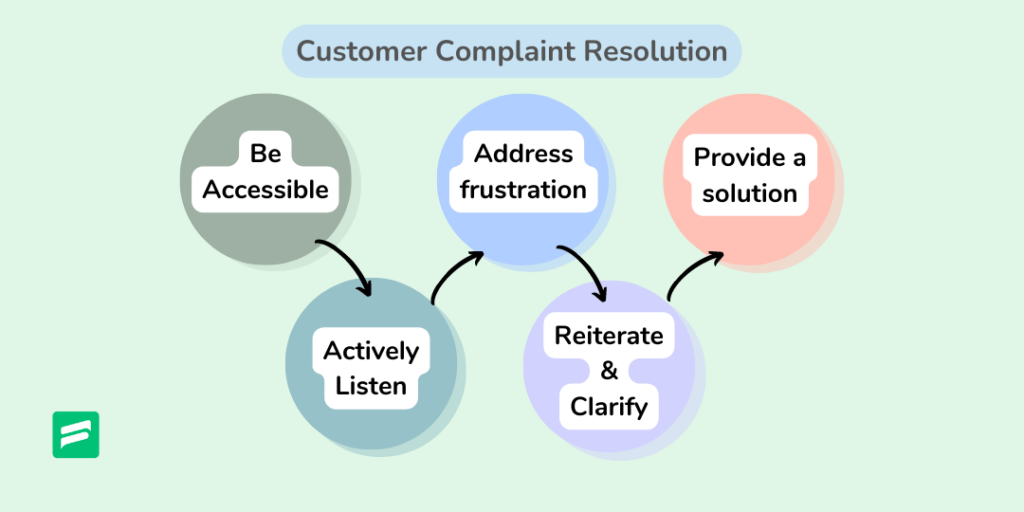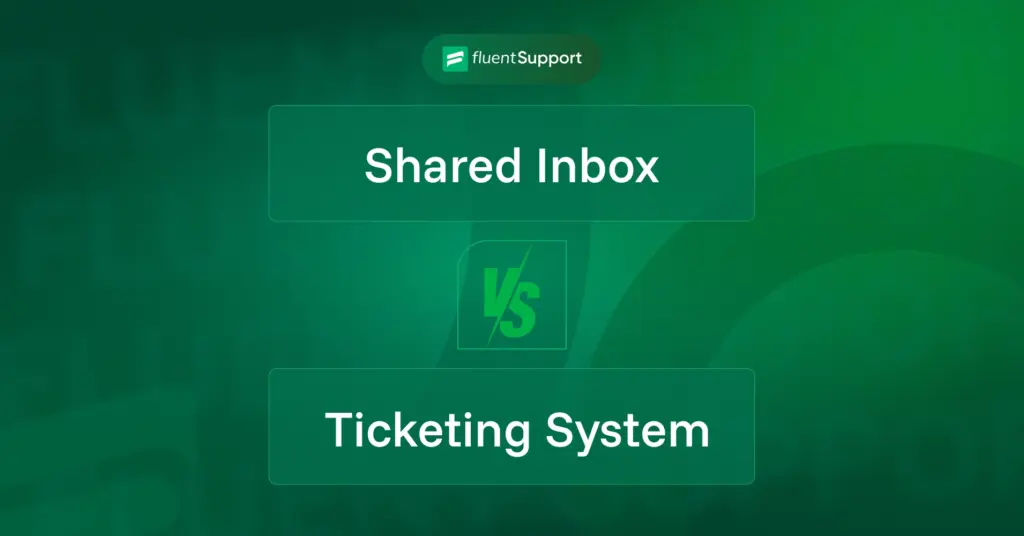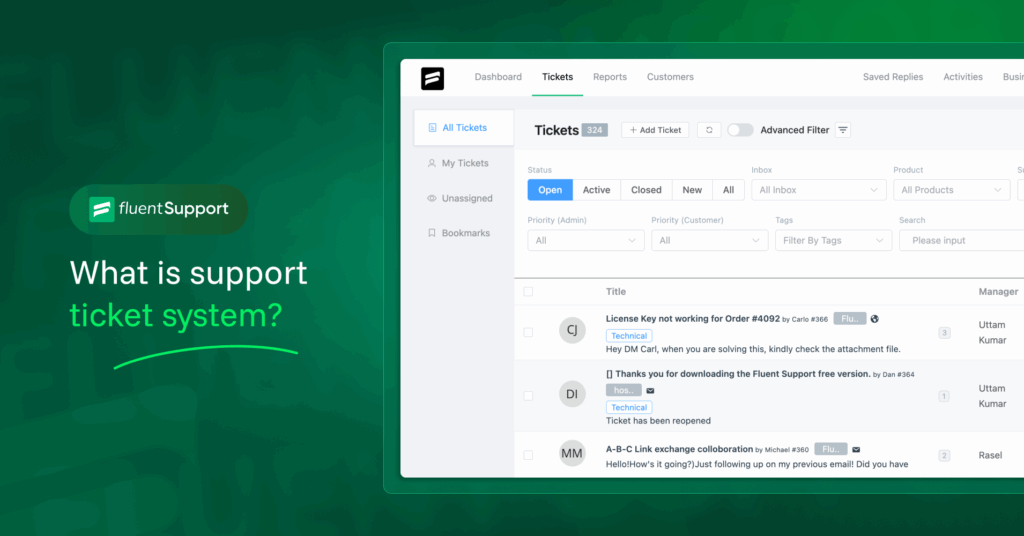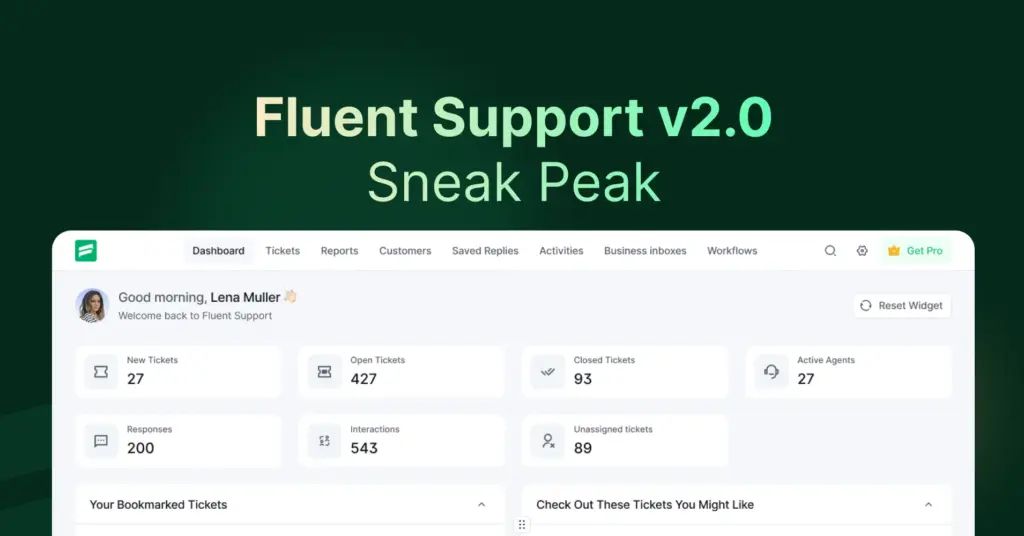
Resolving Customer Complaints: Guide with Examples
By Rasel Siddiqe
May 27, 2022
Last Modified: November 13, 2025
For most businesses, the sad truth is everyone is not going to like what you build. To be fair, that’s not the point of any business. Whether your product is good or bad you’ll get vastly different opinions. Hence, you have to expect and be prepared for negativity towards your products or your business in general. There can be more than one reason for this negativity. It could be from lackings in your product, customer service, or even support. Regardless, you have to invest in resolving customer complaints, if you want your business to thrive.
In this article, we’ll be looking at how you should approach customer complaints, what’s the right way to respond to them, and how it can make a difference.
What are customer complaints?
Objectively, customer complaints are basically customers letting you know that there is a gap between what they expect and what your company is offering. This gap can be due to something as simple as misplaced documentation or, something massive like a bug in an essential feature, or a missing feature altogether.
In any case, these complaints are an opportunity for your business. Promptly offering to solve complaints and making the customer feel heard is what defines a good business. So with that understanding, let’s dive into how you should resolve customer complaints.
7 steps to follow when resolving customer complaints

In this section, we’ll look at the steps you should take to resolve customer complaints. While they might not seem like rocket science they are very effective at complaint handling.
1. Listen carefully
We’ve already talked about why active listening is among the must-have customer service skills. However, when handling customer complaints this is exceptionally important. When a customer is filing a complaint, the first thing you have to do is understand their general vibe.
Are they agitated? Frustrated? Disappointed?
It’s absolutely crucial you clearly identify the customers’ mental state. Because understanding this makes the later steps easier. So as soon as a customer comes in, employ active listening to evaluate the degree of nuisance your business has caused.
2. Let’em vent if it helps
After knowing what a customer’s state is you have a handful of options. Now, if the customer is disappointed you should let them elaborate on how that disappointment can be managed. On the other hand, a frustrated customer will express their emotions very clearly. The same goes for customers that are agitated or angry.
Before you get to fix the issue you have to let them finish their rant. It’s okay to do so as long they are not using profanity. Remain calm and in control as you do this. It’s very easy to take things personally so remember that their frustration is not with you but the company you work for.
3. Show empathy
We understand it’s going to be difficult to remain calm and do your job after listening to someone rant for 20 minutes. As long as the customer is in line, the only step you can take is to be empathetic towards what they have to say.
What’s more important is you have to communicate this empathy so the customer feels valued. Speaking from personal experience, a smart agent can transform an anger-driven discourse into a pleasant experience. Support agents although seeming at the mercy of the customers’ whim are actually more in control of the conversation. This is why, how a service interaction ends depends on the agents.
On a plus side, being empathetic offers agents a better chance to solve a problem.
4. Thank them for filing the complaint
All of the steps above are meant to bring a customer into a manageable mental state. After expressing their side and receiving validation from you, a customer usually calms down. Now it’s time for you to take control of the conversation.
Start by thanking your customer for reaching out with their issue. The idea is not just to say thank you. It’s about letting them know, that you care and appreciate their feedback. This also helps create the impression that a customer complaint isn’t a barrier but rather an opportunity.
5. Sincerely apologize even if you are not to blame
As long as a customer has a valid complaint, you can’t really shift blame. When you focus on who made the mistake you get distracted. Not to mention it creates an impression of mismanagement that doesn’t help anyone.
It could just as well that the fault was on the customer’s end. Regardless you ought to apologize to keep the conversation cordial and flowing. This helps your customer to calm down and be more open to your suggestions.
6. Get the facts before resolving customer complaints
Now that we’ve completed the damage control phase of the conversation it’s time to get solving. The ideal thing to do here is to wait for them to finish what they have to say. This has two perks.
Once you get the full information available before you resolve a customer complaint. Two, it gives a sense of control and satisfaction to the customer.
It’s very important that you don’t use scripted replies or ones that sound like that. You should use customer complaints as an opportunity to start a genuine conversation and build trust. If you feel the need for additional information, try asking open-ended questions. This also helps the customer open up to you about their concerns more easily.
7. Offer a solution
Only when you’ve gauged a customer’s mindset and the degree of their issue you can get to resolving the complaint.
Your company’s guidelines are there to tell you what you can and cannot provide. Keep this in mind when resolving customer complaints. Making a business promise you can’t keep will only set you back.
Try to be as cordial and understanding as possible when talking through a solution. If it’s a lengthy process don’t hesitate to walk them through it. If you need to forward a complaint to another agent, do so on your own accord. It’s not acceptable to make the customer repeat themselves once they’ve already spoken to you.
Provide customer support with the fastest support desk on WordPress.
How to deal with customer complaints: Examples
Although we talk about the types of common complaints, it’s important to keep in mind that not all customers are the same even if they have the same sort of issue. So be sure about the type of customer before handling these complaints blindly.
Complaint #1: Product is out of stock or on backorder
For most online businesses this is the most common issue. Now to be fair you as a business have no control over this kind of situation. That being said, this does ruin a customer’s experience, and that is something you should care about. So when a customer comes in with an out-of-stock you should handle it with care. To resolve customer complaints in this context you should
- Apologize for the inconvenience
- Interest them in comparable alternatives
- Offer free shipping (if your company allows it of course!)
- Tag them for priority shipping when restock is available
- Ensure a discount on their next purchase
- If they wish to cancel the order do it for them
Offering employing one or more of these steps can help you resolve the issue with almost zero losses.
Complaint #2: Lack of follow-through
Some customer complaints arise from a lack of attention. In this case, the customer may be okay with the product but can’t use it without talking to someone in the service team. Not being prioritized in this scenario is something few customers will let slide.
When handling complaints about the lack of follow-through you should,
- Begin by apologizing
- Identify the point where the lapse occurred
- Address the problem the customer had in the first place
- Place them in a priority queue for the support team
- Assign an agent who’s capable
Managing customer support tickets with grace can not only redeem your reputation as a brand it can actually add positive reinforcement to the customers’ perception. That’s something money can’t buy.
Complaint #3: Customer service issues
There can be tons of issues on the customer service end of your company. Queries can go missing, relevant resources may not be available, and the assigned agent may call in sick. In the middle of an ongoing service conversation, this can ruin the whole deal. If a customer complains specifically about the efforts of your support team, you ought to first solve the issue they had in the first place.
- The best method to resolve such complaints is to
- Apologize for the delay
- Don’t try to justify the incident with excuses
- Promptly hear any suggestion or expectation they have
- Offer priority support
- Reduce the wait time as much as possible
- This will help customers feel valued instead of wronged.
Complaint #4: Broken or defective product
By far the most common for most online businesses is defective product/service complaints. Since the problem is on your end always treat these as priority complaints. Also because the customer has already paid for the product but was unable to use it, extra care is a must.
To resolve broken/defective product complaints you should,
- Immediately provide them with the refund/replacement policy of your company
- Inform if they are suited to avail these policies
- Clearly state whether their particular issue is covered within terms
- Offer guidance through the process
- Ask for the purchase document, and proof of defect as politely as possible
- Whether you provide the refund or a new product or neither, clearly tell them the outcome to expect
These kinds of complaints are the easiest and the hardest to manage. If the customer is legit and your policy covers their replacement that’s pretty easy to handle. Just replace the product and the customer will happily go about their day.
However, if that’s not true, you have to be the bringer of bad news. In which case keep a cool head and clearly state your answer without hesitation.
Wrapping up
Resolving customer complaints is a challenge support agents face every day. The conversations are usually tedious. As an agent, you need to associate success with the customer’s happiness. Think of it like this.
A software developer needs to solve problems in the product to feel successful. A footballer has to score a goal to celebrate. For a support agent, that goal is to swing a dissatisfied customer 180 degrees.
Remember, as an agent you are the one who sets the tone of the conversation. Use this wisely and if not all, atleast most of your resolved issues will leave a better impression than what the customer came in with.
Until next time, happy serving!
Start off with a powerful ticketing system that delivers smooth collaboration right out of the box.












Leave a Reply